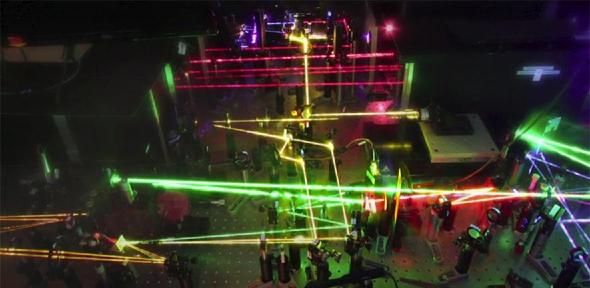
Researchers have identified a key mechanism responsible for the lower efficiencies of organic solar cells and shown a way that this hurdle might be overcome.
The researchers, led by the University of Cambridge, identified a loss pathway in organic solar cells which makes them less efficient than silicon-based cells at converting sunlight into electricity. In addition, they identified a way to suppress this pathway by manipulating molecules inside the solar cell to prevent the loss of electrical current through an undesirable state, known as a triplet exciton.
Their results suggest that it could be possible for organic solar cells to compete more closely with silicon-based cells for efficiency.
“Prganic solar cells can do lots of things that inorganic solar cells can’t, but their commercial development has plateaued in recent years, in part due to their inferior efficiency. A typical silicon-based solar cell can reach efficiencies as high as 20 to 25%, while organic solar cells can reach efficiencies of around 19% under laboratory conditions, and real-world efficiencies of about 10 to 12%.”- Dr Alexander Gillett, Cavendish Laboratory
Organic solar cells generate electricity by loosely mimicking the natural process of photosynthesis in plants, except they ultimately use the energy of the sun to create electricity rather than convert carbon dioxide and water into glucose. When a light particle, or photon, hits a solar cell, an electron is excited by the light and leaves behind a ‘hole’ in the material’s electronic structure. The combination of this excited electron and hole is known as an exciton. If the mutual attraction between the negatively charged electron and the positively charged hole in the exciton, akin to the attraction between the positive and negative poles of a magnet, can be overcome, it is possible to harvest these electrons and holes as an electrical current.
However, electrons in solar cells can be lost through a process called recombination, where electrons lose their energy - or excitation state - and fall back into the empty ‘hole’ state. As there is a stronger attraction between the electron and hole in carbon-based materials than in silicon, organic solar cells are more prone to recombination, which in turn affects their efficiency. This necessitates the use of two components to stop the electron and hole from recombining rapidly: an electron ‘donor’ material and an electron ‘acceptor’ material.
Using a combination of spectroscopy and computer modelling, the researchers were able to track the mechanisms at work in organic solar cells, from the absorption of photons to recombination. They found that a key loss mechanism in organic solar cells is caused by recombination to a particular type of exciton, known as a triplet exciton.
In organic solar cells, triplet excitons present a difficult problem to overcome, as it is energetically favourable for them to form from the electrons and holes. The researchers found that by engineering strong molecular interactions between the electron donor and electron acceptor materials, it is possible to keep the electron and hole further apart, preventing recombination into triplet excitons from occurring.
Computational modelling suggests that by tuning the components of the organic solar cells in this way, the timescales of recombination to these triplet exciton states could be reduced by an order of magnitude, allowing for more efficient solar cell operation.
Alexander J Gillett et al. ‘The role of charge recombination to triplet excitons in organic solar cells.’ Nature (2021). DOI: 10.1038/s41586-021-03840-5
Original University of Cambridge article here.
Image credit: Akshay Rao

